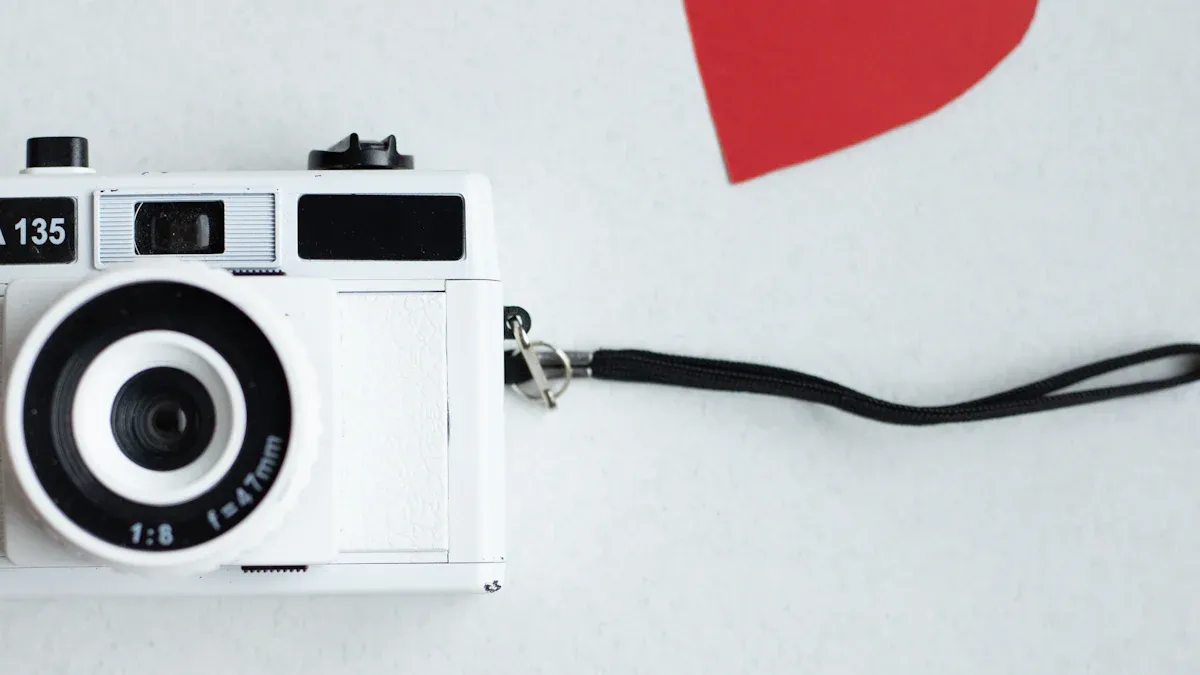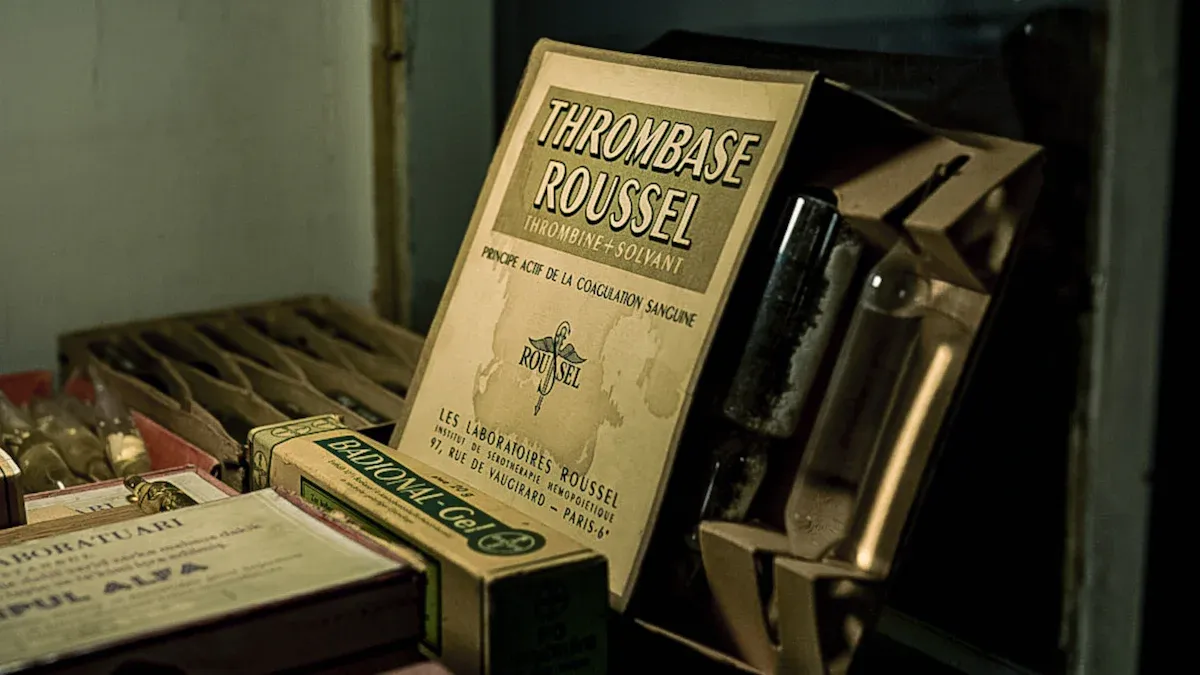The Best Practices for Maintaining Rechargeable Flashlight Batteries

Maintaining rechargeable batteries for your helius flashlight ensures reliability and safety. Proper care, like fully charging before use and storing in a cool, dry place, extends battery life.
Overcharging can cause overheating or short circuits, risking battery failure.
Always inspect batteries for damage and clean contacts to maintain performance.
Key Takeaways
Use the right charger for your flashlight to avoid damage.
Do not overcharge batteries; unplug them when fully charged to last longer.
Keep batteries in a cool, dry spot to stop rust and keep them working well.
Best Practices for Charging Rechargeable Batteries

Use the Right Charger for Your Flashlight
Using the correct charger is essential for maintaining the health of your rechargeable batteries. Chargers designed specifically for your flashlight ensure compatibility and prevent issues like overheating or improper charging. Avoid using generic chargers, as they may not match the voltage or current requirements of your rechargeable flashlights. Always refer to the manufacturer’s guidelines to select the appropriate charger.
Avoid Overcharging to Extend Battery Life
Overcharging can significantly reduce the lifespan of your rechargeable batteries. It generates excessive heat, damages battery cells, and increases internal pressure, which may lead to leakage or rupture. To avoid this, unplug the charger once the battery reaches full capacity. Overcharging also decreases the overall capacity of the battery, making it less efficient over time.
Tip: Use chargers with automatic shut-off features to prevent overcharging and extend battery life.
Charge at the Recommended Voltage and Current
Charging your flashlight batteries at the correct voltage and current is crucial for their longevity. For lithium-ion batteries:
Nominal voltage: ~3.7V
Fully charged voltage: ~4.2V
Discharged voltage: ~2.7V
Charging outside these ranges can harm the battery and reduce its efficiency. Always check the specifications of your rechargeable flashlights to ensure proper charging techniques.
Monitor Charging Time for Safety
Improper charging times can pose safety risks. Overcharging or leaving batteries unattended during charging may lead to excessive heat, internal pressure buildup, or even thermal runaway. This can cause temperatures to rise dangerously high, releasing toxic gases. Always monitor the charging process and avoid leaving batteries plugged in overnight.
Storage Practices for Battery Health
Store Batteries in a Cool, Dry Place
Proper storage is essential for maintaining the health of your rechargeable batteries. Always store them in a cool, dry place to prevent damage caused by moisture or heat. High humidity can lead to corrosion, while excessive heat accelerates chemical reactions inside the battery, reducing its lifespan. Aim to store batteries at room temperature or below, ideally around 59 °F (15 °C). Avoid temperatures exceeding 100 °F (38 °C) to prevent internal discharge. Using a vapor-proof container can help protect batteries from humidity.
Avoid Extreme Temperatures During Storage
Extreme temperatures can harm rechargeable flashlights and their batteries. High temperatures reduce performance and cause premature aging. Freezing temperatures hinder the battery's ability to deliver power effectively. Refer to the table below for the ideal temperature ranges:
Action | Temperature Range |
|---|---|
Discharge | -10 to 60 °C |
Charge | 0 to 45 °C |
Following these guidelines ensures proper storage and extends battery life.
Keep Batteries Partially Charged for Long-Term Storage
Storing rechargeable batteries at full capacity can degrade their performance over time. Instead, aim to keep them at around 40% charge. This practice minimizes capacity loss and ensures they remain in good operating condition. Avoid charging batteries to maximum capacity if they are not needed immediately. Always store them separately from devices to prevent unnecessary discharge.
Use Protective Cases to Prevent Damage
Protective cases are a simple yet effective way to safeguard your flashlight batteries. These cases shield batteries from physical damage, environmental elements, and dust accumulation. They also provide cushioning against impacts, ensuring your rechargeable batteries remain in top condition during storage. Using protective cases is one of the best practices for battery health.
Handling and Maintenance Tips
Clean Battery Contacts to Maintain Performance
Routine maintenance checks are essential for keeping your rechargeable flashlights in top condition. Dirty or corroded battery contacts can disrupt the electrical flow, reducing performance. Follow these best practices for battery health:
Inspect your flashlight batteries regularly for dirt or corrosion.
Use a wire brush to clean the terminals effectively.
Clean contacts every 3 to 6 months using baking soda or vinegar. For commercial cleaners, extend the interval to 6 to 12 months.
Wear gloves and eye protection to avoid contact with harmful substances.
Disconnect the negative cable first to minimize the risk of sparks.
These techniques ensure optimal performance and help extend battery life.
Inspect Batteries for Damage or Leaks
Neglecting to inspect your rechargeable batteries can lead to serious hazards. Damaged batteries may leak, corrode, or even pose fire risks. Watch for these potential issues:
Leakage and corrosion can harm internal flashlight components.
Accidental activation may drain or explode batteries, leaving you unprepared during emergencies.
Fire hazards increase if damaged batteries are stored near flammable materials.
Diminished performance results in dimmer light output and reduced visibility.
Regular inspections are a simple yet effective way to maintain the health of your rechargeable flashlights.
Remove Batteries from the Flashlight When Not in Use
Removing batteries when your flashlight is idle offers multiple benefits:
Prevents corrosion by minimizing leakage risks.
Saves energy by avoiding unnecessary power drain.
Eliminates accidental activation from unintentional button presses.
Allows early detection of potential issues during routine maintenance checks.
This practice not only protects your flashlight batteries but also ensures they remain ready for use.
Handle Batteries Carefully to Avoid Damage
Proper handling techniques are crucial for maintaining rechargeable batteries. Fully charge them before use and store them in a cool, dry place. Avoid exposing them to extreme temperatures, as this can shorten their lifespan. Regularly inspect batteries and clean contacts with a cotton swab dipped in rubbing alcohol. Following these maintenance tips will help you preserve the health of your rechargeable flashlights and extend their lifespan.
Common Mistakes to Avoid with Rechargeable Batteries
Using an Incompatible Charger
Using the wrong charger can harm your rechargeable batteries and reduce their lifespan. Chargers designed for other devices may not match the voltage or current requirements of your rechargeable flashlights. This mismatch can lead to overheating, overcharging, or even permanent damage. Always use the charger recommended by the manufacturer. If you lose the original charger, purchase a compatible replacement to ensure the health of your flashlight batteries.
Storing Batteries in Hot or Humid Conditions
Improper storage can significantly affect the performance and lifespan of your rechargeable batteries. High temperatures accelerate chemical reactions inside the battery, leading to swelling or leakage. Humidity can cause corrosion, damaging the battery contacts and reducing efficiency. Store your rechargeable flashlights and batteries in a cool, dry place to avoid these issues. Avoid leaving them in direct sunlight, near heaters, or in damp environments like basements.
Mixing Batteries of Different Ages or Types
Mixing batteries of different ages or types can create serious safety risks. Older batteries have higher internal resistance, causing them to heat up faster. Using different types of batteries together can lead to imbalanced discharge rates, increasing the chances of overheating, leakage, or even explosion. To avoid these risks, always use batteries of the same type and age in your rechargeable flashlights. This practice ensures consistent performance and extends the lifespan of your devices.
Ignoring Signs of Battery Wear or Damage
Failing to inspect your batteries regularly can lead to unexpected failures. Common signs of wear include corrosion, physical damage, flickering light, or rapid drainage. Damaged batteries can leak harmful chemicals or cause your flashlight to malfunction. Replace any battery showing these signs immediately. Regular maintenance and inspections help you identify issues early, ensuring your rechargeable flashlights remain reliable when you need them most.
Recycling and Disposal of Rechargeable Batteries

Importance of Proper Battery Disposal
Proper disposal of rechargeable batteries is essential for protecting the environment and human health. These batteries often contain hazardous materials like lead, cadmium, or lithium, which can leak into the soil and water if discarded improperly. Recycling prevents these harmful substances from polluting ecosystems and reduces the need for mining new raw materials. By disposing of your flashlight batteries responsibly, you contribute to a cleaner and safer planet.
Tip: Always check local regulations for battery disposal to ensure compliance and safety.
How to Recycle Batteries Safely
Recycling rechargeable flashlight batteries requires careful preparation to avoid accidents. Follow these steps to recycle them safely:
Secure the positive terminals with masking tape to prevent contact with metal or other batteries.
Store used batteries in a cool, dry area, away from children and flammable materials.
Use a non-conductive container, such as plastic or cardboard, for storage.
If batteries are broken or leaking, place them in a separate baggie or UN-approved container. Wear protective gloves and eyewear during handling.
These techniques ensure safe recycling and protect you from potential hazards.
Finding Local Recycling Programs
Many local programs make recycling rechargeable flashlights and their batteries convenient. The table below outlines common options based on battery type:
Type | Disposal Options |
|---|---|
Nickel Cadmium (Ni-Cd) | Specialized battery recyclers, participating retailers, or household hazardous waste collection programs. |
Lithium-Ion (Li-ion) | Similar options as Ni-Cd batteries, with extra caution for non-removable types. |
Nickel Metal Hydride (Ni-MH) | Same channels as Ni-Cd and Li-ion batteries. |
Check with local facilities or retailers to find the most convenient option for your area.
Avoiding Improper Disposal Practices
Improper disposal of rechargeable batteries can lead to serious consequences. Throwing them in the trash risks fires, chemical leaks, and environmental damage. Avoid these practices by educating yourself and others about proper disposal methods. Remove batteries from devices, tape the terminals, and locate a nearby recycling facility. Spread awareness in your community to encourage responsible recycling habits.
Note: Many retailers and public facilities offer drop-off locations for easy recycling.
Maintaining your rechargeable flashlight batteries ensures reliability and safety. Fully charge them before use, store them in a cool, dry place, and avoid extreme temperatures. Regular inspections and proper cleaning prevent damage and extend lifespan. Recycling used batteries responsibly protects the environment. Adopting these practices keeps your flashlight ready when you need it most.
FAQ
How can you tell if a rechargeable battery is of good quality?
Look for certifications like UL or CE. High-quality batteries often have consistent performance, longer lifespans, and safety features like overcharge protection.
Can you use any charger for your rechargeable flashlight batteries?
No, always use a charger designed for your battery type. Using the wrong charger can damage the battery and reduce its quality and lifespan.
Why should you recycle rechargeable batteries?
Recycling prevents harmful chemicals from polluting the environment. It also helps conserve resources by reusing materials, ensuring a sustainable and high-quality ecosystem.
See Also
Key Strategies for Maintaining Your Flashlight Effectively
How Rechargeable Flashlights Discharge: A Comprehensive Overview
Maximize Your Flashlight's Battery Life With These Tips
Selecting The Best Battery Type For Your Flashlight
Complete Handbook for Cleaning and Maintaining Your Flashlight
